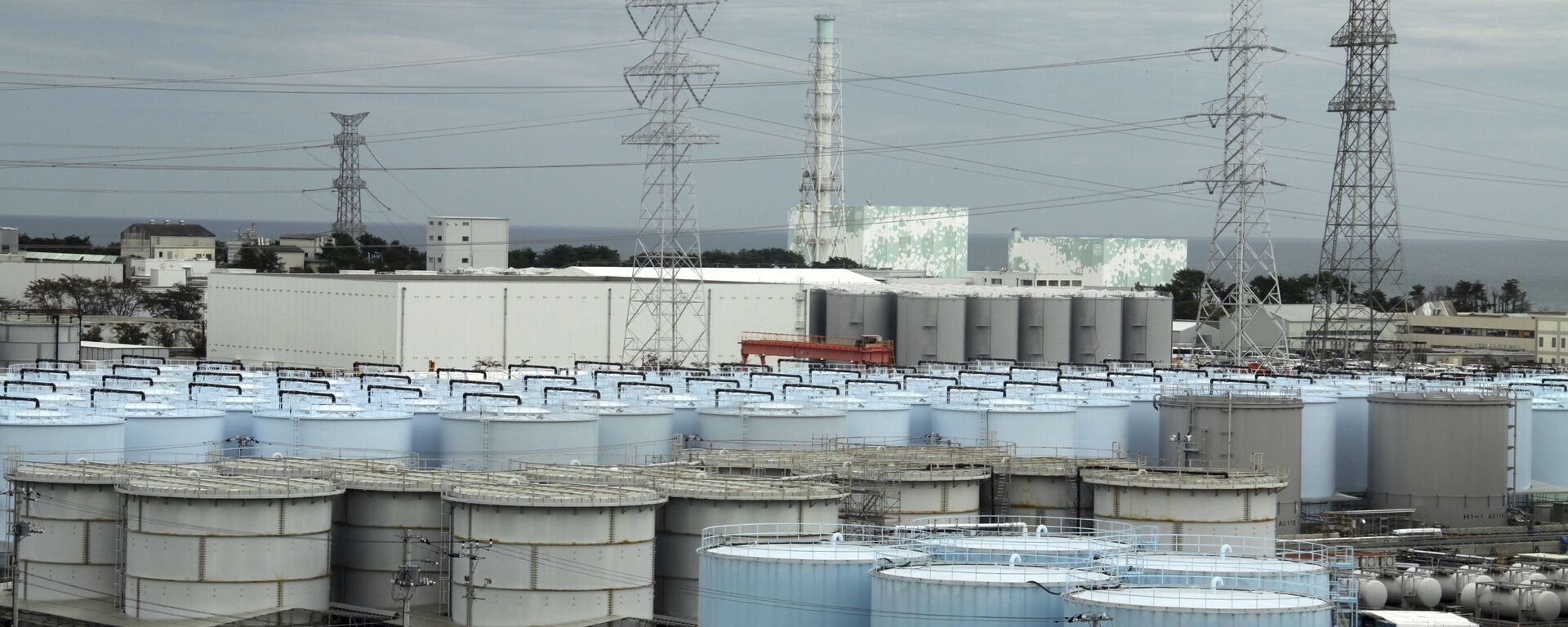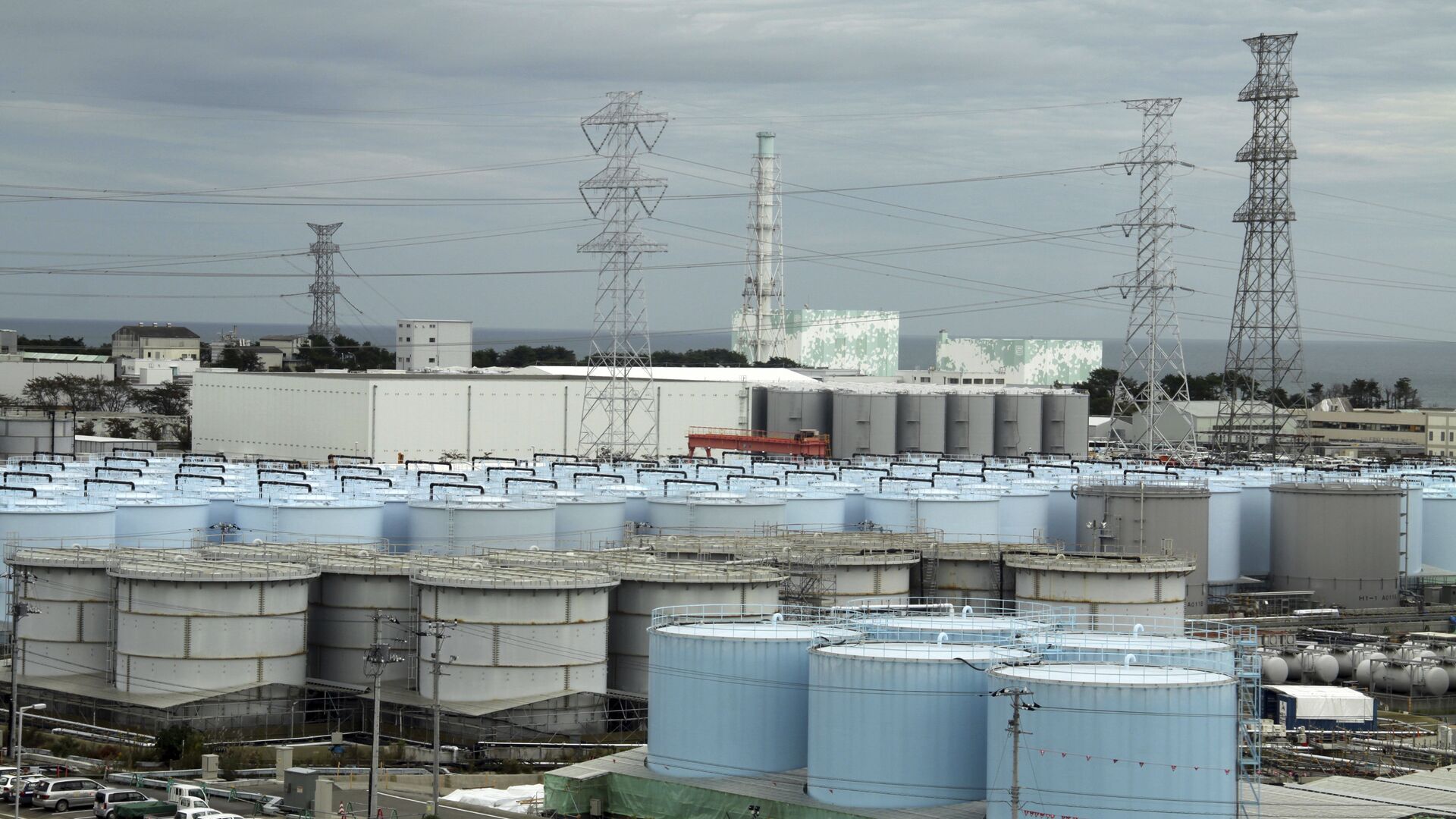https://sputnikglobe.com/20231029/fukushima-nuclear-plant-workers-hospitalized-after-being-sprayed-with-contaminated-water-1114565729.html
Fukushima Nuclear Plant Workers Hospitalized After Being Sprayed With Contaminated Water
Fukushima Nuclear Plant Workers Hospitalized After Being Sprayed With Contaminated Water
Sputnik International
On Wednesday, four workers who were cleaning pipes to release treated radioactive water from the Fukushima nuclear power plant were sprayed with radioactive water. Two of them were hospitalized as a precaution
2023-10-29T05:34+0000
2023-10-29T05:34+0000
2023-10-29T05:34+0000
asia
fukushima
japan
pacific ocean
international atomic energy agency (iaea)
rosselkhoznadzor
fukushima daiichi nuclear power plant
https://cdn1.img.sputnikglobe.com/img/106091/77/1060917747_0:156:3001:1844_1920x0_80_0_0_d0ef4c01be8914cb18618a35ccfbe04f.jpg
On Wednesday, four workers who were cleaning pipes to release treated radioactive water from the Fukushima nuclear power plant were sprayed with radioactive water. Two of them were hospitalized as a precaution, according to plant operator Tokyo Electric Power Company (Tepco).According to the plant operator, the two hospitalized employees had registered radiation level readings at or above 4 becquerels per square centimeter, the threshold considered safe.Both workers will remain in hospital for approximately two weeks for follow-up examinations. Tepco is examining how the accident occurred and is reviewing measures to prevent its recurrence.On 24 August, having received approval from the International Atomic Energy Authority (IAEA), Japan began discharging more than a million tons of treated water from the destroyed Fukushima Daiichi nuclear power plant into the Pacific Ocean. The process is expected to take decades. The dumping was opposed by the local fishing community - a collective of more than 150 people took the case to court. After dumping began, China immediately banned imports of fish and seafood from Japan. Russia's Federal Service for Veterinary and Phytosanitary Surveillance (Rosselkhoznadzor) imposed temporary restrictions on the supply of fish and seafood from Japan to Russia, which will remain in effect until information on the safety of the seafood is assured and the products are analyzed by Rosselkhoznadzor experts.
https://sputnikglobe.com/20231005/japans-seafood-exports-drop-by-30-amid-fukushima-water-discharge-1113945686.html
fukushima
japan
pacific ocean
Sputnik International
feedback@sputniknews.com
+74956456601
MIA „Rossiya Segodnya“
2023
News
en_EN
Sputnik International
feedback@sputniknews.com
+74956456601
MIA „Rossiya Segodnya“
Sputnik International
feedback@sputniknews.com
+74956456601
MIA „Rossiya Segodnya“
fukushima nuclear plant workers hospitalized, nuclear power, radioactive water, fukushima nuclear water, nuclear water dump
fukushima nuclear plant workers hospitalized, nuclear power, radioactive water, fukushima nuclear water, nuclear water dump
Fukushima Nuclear Plant Workers Hospitalized After Being Sprayed With Contaminated Water
Japan began releasing some of the estimated 1.34 million tons of Fukushima water into the ocean on 24 August, despite objections from neighboring countries and local fishermen.
On Wednesday, four workers who were cleaning pipes to release treated radioactive water from the Fukushima nuclear power plant were sprayed with radioactive water. Two of them were hospitalized as a precaution, according to plant operator Tokyo Electric Power Company (Tepco).
“We’ve been told the condition of the two workers who have been hospitalized is stable,” the Tepco spokesman said.
According to the plant operator, the two hospitalized employees had registered radiation level readings at or above 4 becquerels per square centimeter, the threshold considered safe.
Both workers will remain in hospital for approximately two weeks for follow-up examinations. Tepco is examining how the accident occurred and is reviewing measures to prevent its recurrence.
On 24 August, having received approval from the International Atomic Energy Authority (IAEA), Japan began discharging more than a million tons of treated water from the destroyed
Fukushima Daiichi nuclear power plant into the Pacific Ocean. The process is expected to take decades. The dumping was opposed by the local fishing community - a collective of more than 150 people took the case to court. After dumping began, China immediately banned imports of fish and seafood from Japan.

5 October 2023, 08:36 GMT
Russia's Federal Service for Veterinary and Phytosanitary Surveillance (Rosselkhoznadzor)
imposed temporary restrictions on the supply of fish and seafood from Japan to Russia, which will remain in effect until information on the safety of the seafood is assured and the products are analyzed by Rosselkhoznadzor experts.



